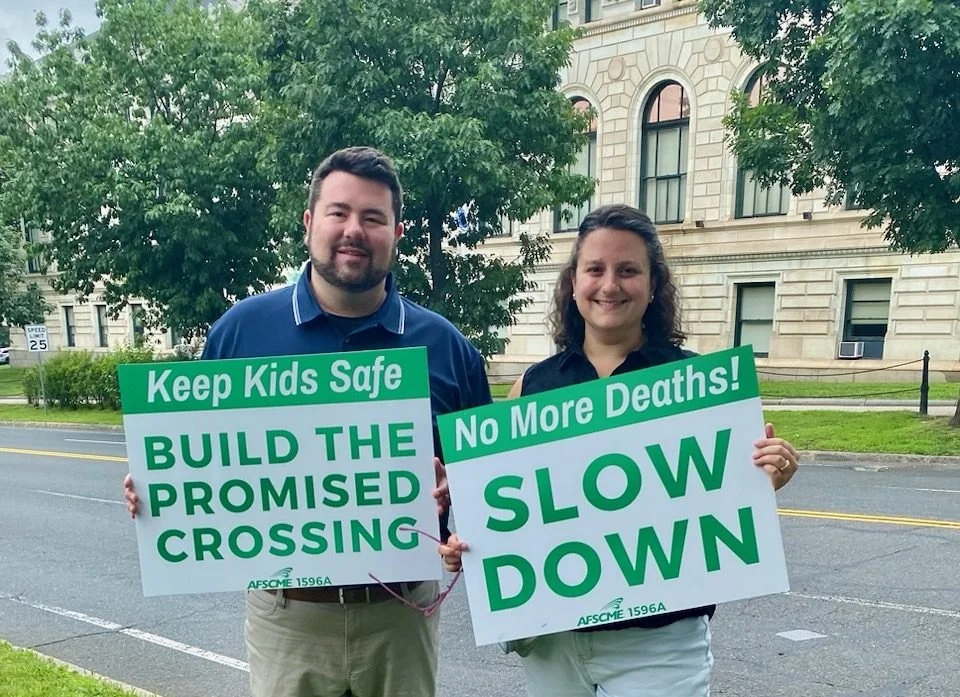How Many People Have To Die To Make a Street Safer?
(Source: Flickr/John Watson.)
On November 14, 2023, 68-year-old Michael Cooley succumbed to the injuries he sustained while crossing the street between his home and the Springfield Central Library in Springfield, Massachusetts. His life is the latest claimed by State Street, one of the most dangerous stroads in the city.
In 2014, 7-year-old Destiny Gonzalez, her mother, and her 8-year-old cousin were struck when crossing that same street. It was around 5:30 p.m. on the first day of December and the family had just left the library, whose grand staircase spills onto State Street, yet isn’t met with a crosswalk. They did what desire paths show hundreds have done before: they crossed mid-block. Gonzalez didn’t survive her injuries and her family members were left in critical condition.
At the time of the tragedy, a local barber named Justice told MassLive that “there should be a crosswalk outside a major public building, such as the city's main library branch.”
It appeared Gonzalez’s death would turn the tide and a transformation of State Street was imminent. Springfield’s Commissioners gathered in 2015 to deliberate safety interventions for the corridor, specifically whether to install a “flashing light at/near the location that library visitors cross State Street to get to the parking lot.” Yet, despite unanimous agreement that night among the commissioners, State Street never saw the proposed upgrades.
In 2019, City Council President Jesse Lederman resurfaced the idea, urging that the Department of Public Works install a crosswalk in front of the library. As of publishing, there is still no crosswalk. In July 2023, Lederman expressed frustration at the city’s pace in a press statement:
“It’s almost August, and we haven’t seen any action. We shouldn’t have to hold vigils to get crosswalks built. It just should not be this hard—if our local government can’t manage something this basic, what is going on? In the meantime, there continues to be daily crossings at this location that endanger the safety and lives of both pedestrians and drivers on the road.”
The cost of inaction was another life lost two years later. On November 10, 2021, 56-year-old Springfield librarian Gayle Ball was fatally struck while crossing the street to access the library’s employee parking lot. Hers was the third death on State Street that year and the second that month. She was killed in nearly exactly the same place and manner as Gonzalez, seven years earlier.
Yet, Ball’s death appeared to be the last straw and the final, tragic, catalyst for a crosswalk on State Street. That’s at least what city officials promised in January 2022.
That month, the city unveiled concepts for redesigning the site of Ball’s death. The traffic calming would be limited to a single block and would involve narrowing the road from four to two lanes and installing a raised “high-visibility” crosswalk where the library’s staircase meets the street. On either end of the block, State Street would return to its four lane width. To many, the plan fell short, but it was nevertheless a welcome intervention after years of inertia.
By the summer of 2022, Springfield put out construction barrels to simulate how the changes would impact traffic patterns. After three months, however, the efforts were scrapped. Chris Cignoli, Springfield’s Public Works director, concluded he “still didn’t have enough data” to make a decision. He said the same in 2019, claiming a signalized crosswalk would make the area more dangerous.
Fed up, Springfield’s librarians took to the streets.
“We are picketing because we were promised a crosswalk from the public parking lot for both employees and patrons who access both the museums and the libraries, because we’ve had multiple deaths on this street from people trying to cross,” reference librarian Maggie Keane told MassLive.
“I was working the night Gayle was killed and I'm still not over it," Elizabeth McKinstry, a training and programming librarian, told StreetsBlogMASS.
With Cooley’s death occurring just days before the two-year anniversary of Ball’s passing, many are wondering: what will it take to make State Street safe?
“I think this spot has shown time and time again that it’s not a safe area for a number of reasons,” Ball’s sister-in-law Kathy Fiore told 22News. “And I think that if a little more attention could be paid to this area it could be safer for many folks who need to cross this street.”
You see the suffering caused by unsafe streets. Strong Towns has developed a free Crash Analysis Studio course for people just like you. Enroll today and change the way your city approaches traumatic collisions—and save lives.







Asia (pronounced “ah-sha”) Mieleszko serves as a Staff Writer for Strong Towns. A dilettante urbanist since adolescence, she's excited to convert a lifetime of ad-hoc volunteerism into a career. Her unconventional background includes directing a Ukrainian folk choir, pioneering synaesthetic performances, photographing festivals, designing websites, teaching, and ghostwriting. She can be found wherever Wi-Fi is reliable, typically along Amtrak's Northeast Corridor.